Megan Dunn – 14 January, 2012
Leonard began by examining NZ art pre and post-McCahon, taking us through the intellectual tussles between the head and the heart, the battle between the nationalists and the internationalists. Ultimately it's the journey from NZ art, made by New Zealanders for New Zealand audiences, to the phase we're in now, a phase Leonard likes to call ‘The end of New Zealand art.'
Wellington
Robert Leonard Lecture
Love is a Battlefield: Nostalgia for Intimacy
Sat, 26 Nov 2011, 5:30 pm
I came to the tenth Gordon H Brown lecture at City Gallery to hear Robert Leonard address the theme: Love is a battlefield: Nostalgia for Intimacy. I expected it was going to be a good lecture and it was. What I didn’t expect was that I’d feel inadvertently exposed by it. I wouldn’t have gone to this lecture if I had not met Robert and been influenced by him, and I certainly wouldn’t have dreamed of writing about this lecture if I hadn’t felt this connection. Funnily enough this was yet another illustration of the ‘intimacy’ in New Zealand art and its accompanying social scene.
The auditorium quickly filled up with an audience mainly on the wrong side of forty - at first it seemed an entirely different crowd to the gallery goers at the Prospect opening the night before, but then the curators poured in, all figures of stature in their own right. Up on the screen was an aptly ‘paranoid’ cartoon by Michael Stevenson about the infrastructure and control of the art world. The introduction from Tina Barton was touching, especially the description of Leonard as precocious. And he still is precocious. A definer of our thoughts; the prodigal curator who once told me, ‘You can’t force an epiphany’.
Leonard introduced the notion of intimacy - both the good and bad sides of the force. Twenty years ago he was working on the Headlands exhibition alongside Bernice Murphy who linked the concepts of distance, isolation and smallness when describing the intimacy of the NZ art scene. This was a perception that Leonard did not share or relate to at that time. He later realized that was because he was operating inside it. Leonard talked about the fact that intimacy is hard to measure and has emotional connotations. ‘…it explains a lot about the past - rather than the present or the future - of NZ art.’
He held this thematic lens up to the work of Colin McCahon, Billy Apple, Julian Daspher, and the Headlands exhibition. I’m not sure if these were the names I expected to hear him discuss or not. A friend pointed out later that there was a distinct lack of focus on female artists, but I forgave him! (The lecture was intimate enough.) Leonard stated his case clearly and was transparent about the fact that he was referring to a period of New Zealand art he had lived through. It was plain that he was pursing a subjective concept - but one that effects the way we internalize our experiences of the art scene.
Leonard began by examining NZ art pre and post-McCahon, taking us through the intellectual (and sometimes literal) tussles between the head and the heart, the battle between the nationalists and the internationalists who wanted to break the rusty cage of the gallery - or at least touch up the skirting boards and relocate the windows. Ultimately it’s the journey from NZ art, made by New Zealanders for New Zealand audiences, to the phase we’re in now, a phase Leonard likes to call ‘The end of New Zealand art.’
Curnow has obviously been an influence, or at least a mind that Leonard has had to address. Love is a Battlefield contained several key references to Curnow, including his 1973 essay High Culture in a small province. What NZ artists originally suffered from was a lack of psychic insulation - or in Leonard’s words, ‘bad intimacy.’ The public was too close. Joe Bloggs needed to back off. In Curnow’s pyramid of the art world the critics and the curators were the middle men - ‘intellectual’ bodyguards who should be providing distance between the artist and the audience. I felt a trifle out of my depth here, ever aware that I have not read any of these seminal texts by Curnow. At art school I realized I was blissfully uninterested in theory and one of my biggest catchphrases in life remains, ‘Don’t over think it.’ I wasn’t even aware that Curnow was in the audience. Leonard later told me it would have been easier if he hadn’t been! (NZ: it’s still more intimate than you think.)
The lecture initially focused soley on McCahon. I guess that’s inevitable. For me McCahon is like a placemat, I don’t even think about the level of infrastructure his work provides. Yet, when I was a teenager I painted dense dark abstracts with rollers that were clearly influenced by McCahon - who else? Leonard notes McCahon was an impasse for artists: everywhere they went he’d been before. ‘He’d been all things for all people: nationalist, internationalist, primitive and modernist (and ultimately post-modernist), a landscape painter, an abstractionist, a conceptual artist, an abstract artist. Starting as a white man laying claim to a silent land, and going on to embrace all things Maori.’
McCahon of course forms the context for subsequent generations, recognized in Barton’s 1989 exhibition After McCahon. Van Hout’s McCahon-esque works were an example of the impossibility of being McCahon now. ‘By the post-modern late -1980s quotation had become ‘appropriation’. You repeated things not to identify with them, but to express your difference.’ Artists like van Hout were not producing homage; they were making a fundamentally different type of work. These were especially relevant points for me to consider, as I was once a youngster making appropriated video works. (By the time I arrived at Elam, any pretensions of becoming McCahon were completely knocked out of me!)
The lynchpin in Leonard’s examination of intimacy is an event he’d dismissed when he first heard about it as ‘insignificant.’ In time however it has become emblematic of the war between the head and the heart. In 1982 Billy Apple produced an exhibition in the private home of Francis Pound and Sue Crockford. Apple had painted a red manhole cover in the ceiling, slating it for removal and also drew red lines marking where the windows should be moved to. Pat Hanly was one of the ‘friends’ invited over to see this show: Private View: Demonstration/Critique of the Given. Irked by this overly brainy work Hanly’s response was to paint two huge eye in heart tags on the gallery walls. An act of art terrorism!
Back from New York in 1975, Billy was the avant-garde artist who came home to show the locals how it’s done. Leonard notes, ‘Apple’s art polarized people.’ In a funny way it still does, although I have to agree, ‘Nowadays it’s hard to imagine Billy Apple as such a threat to the future of art that a fellow artist would go to such lengths to attack his work in a private home.’
Hanly apologized the next day for his bad behavior - poor Hanly, I do empathize with him. Pound and Apple went on to submit this piece as a page work entitled ‘Attack on the White cube’ to local magazines. Leonard was originally the editor who turned it down for Midwest, but later made amends, acquiring it for the Auckland Art Gallery collection. For Leonard the work had morphed from being a side issue to a central one.
In the context of the lecture this was a highly entertaining event but it also seemed to me - ever aware of the work in Prospect - that for the moment the head has won. We’re in a brainy time for art. The other night I was talking to a young artist who was deriding the cultural status of the humble ‘steel pukeko ornament.’ These kind of conversations bring out some kind of shameful folksy yearning in me - maybe I’m channeling Pat Hanly? When Leonard read out that Pat Hanly’s interests were once listed as kite-flying, sailing and Greenpeace everyone in the lecture laughed.
Daspher’s legacy and death still felt very recent when Leonard spoke of his practice, calling him a ‘transitional artist.’ Daspher paved the way for the next generation blazing that trail into the mythical land of overseas. Leonard names him as an heir to Billy Apple. Daspher’s work made the intimacy of NZ art its subject, before rejecting it entirely. ‘Consequently we can see Daspher as ‘the last New Zealand artist’ or the first of a new generation of New Zealand artists operating internationally in a post-medium post-national art world.’ Daspher exhibited his CV and sent an invite out for a show, inviting the audience not to come to the opening, but rather to spend a couple of hours that evening in the pursuit of intimacy!
My knowledge is pretty scant around Daspher’s work, but he’s been an undeniable influence on many of my peers. It does seem staggering now that he was able to exhibit a show entitled The Drivers, exposing iconic works by Don Driver in the collection storage area of the Govett Brewster, whilst Driver himself worked there as a gallery assistant, ‘…haunting the place like the Phantom of the Opera, one hand in a glove.’ I don’t know what to make of this kind of mockumentary, but it certainly has set a precedent and it is of course a perfect illustration of the theme of ‘intimacy.’
An insistent speaker at the end of the lecture kept refusing the notion of intimacy and replacing it with ‘incest.’ Leonard blinked, at one point commenting ‘it’s all gone a bit Vigil.’ Perhaps the ‘incestuous’ angle wasn’t so off the cuff, considering Leonard had just mentioned Tessa Laird’s book Nights of our Lives featuring the dreams of artists. (I must get a copy, it sounds hilarious.) And an equally tangential project by Terrence Handscomb who published his art world sexual wish-list in Log Magazine. (Leonard was on the list of those Handscomb wouldn’t sleep with for aesthetic reasons.) I thoroughly enjoyed Leonard’s own wish-list for a show called Love Thy Neighbour - a hilarious line up of bitchy art works, from Michael Illingworth’s ‘rancid little painting The Colin McCahon Expert’ to Daniel Malone changing his name by deed poll to Billy Apple.
The lecture at turns both interesting and funny was also elegiac. Leonard admitted that Daspher was ‘his generation’, quoting Brecht who railed against nostalgia saying we should go for the bad new things rather than the good old ones. Yet, Leonard can see the twist in this too: ‘However, I wonder if this nostalgia might not be itself one of the bad new things, because it is very new to me, something I can now only name…’ He concludes finally that we can be nostalgic for something, only once it has past.
‘Our artists and curators face a different set of challenges.’ Indeed. Looking back to 2001, the year I left New Zealand, I couldn’t have imagined the Auckland Art Fair, the Walters Prize was about to surface bringing its expanded ambition, its expanded chance, Venice was just around the corner. I still remember the excitement when Ivan Anthony opened on Krd and a set of artists who couldn’t envisage their practice at Sue Crockford or Gow Langsford suddenly had dealer shows. Once upon a time Massey was in Palmerston North! There were just two main gate keepers for young contemporary artists: Greg Burke and Robert Leonard. That in itself shows how much has changed.
Perhaps subconsciously I’d been intending to write some kind of sycophantic ‘To sir with love’ response to his lecture - maybe I have - ever aware of my own increasing age and fondly recalling my terrible youth in the late 90’s art scene. The lecture ending as it did with one foot in the past, and the other looking towards the ‘green light’ of the future, couldn’t help but remind me of the last line in The Great Gatsby: ‘So we beat on, boats against the current, borne back ceaselessly into the past.’
Or if I was going to be more patriotic, be more self-consiously New Zealand (do a Pat Hanly and wear my heart on my sleeve!), I’d quote Frame ‘….From the first place of liquid darkness, within the second place of air and light, I set down the following record with its mixture of fact and truths and memories of truths and its direction toward the Third Place, where the starting point is myth.’
Love is a battlefield was a lecture about the third place: myth.
Megan Dunn
Recent Comments
Roger Boyce
Waffling reply, as per usual. Consider the notion that administratively micro-managed and distracted academic art programs may be shuffling toward ...
John Hurrell
Roger, isn't the issue one of factual description of the course structures that distinguish say the leading art school of ...
Roger Boyce
@John H I concur with Andrew Paul Wood's observation that 'objects are back......as if they ever went away. I've commented ...
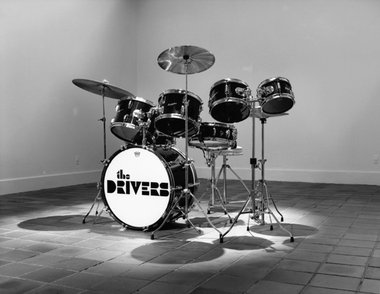

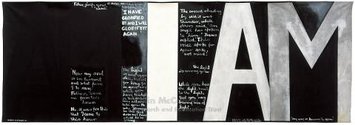
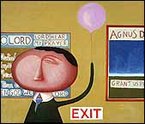
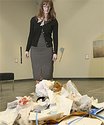
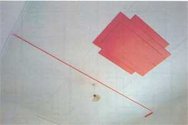
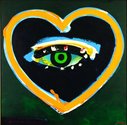
 Advertising in this column
Advertising in this column Two Rooms presents a program of residencies and projects
Two Rooms presents a program of residencies and projects



This Discussion has 18 comments.
Comment
John Hurrell, 4:21 p.m. 16 January, 2012 #
Megan, I wonder how accurate the notion of McCahon being 'all things to all people' is now? He definitely exuded the solitary 'Man Alone' ethos, and was puritanical, and never feminist or overtly for gay rights. He was not as protean as your account of Robert's talk seems to imply. There were definite political forms which he did not inhabit, and a certain sort of masculinity which he did.
Megan Dunn, 4:23 p.m. 16 January, 2012 #
Hmmm, point taken John. I think that quote might have been about the first subsequent generations after McCahon...Robert did mention that McCahon's death created an initial intimacy vacuum, where for artists who may have once had a chance of encountering him, he was now gone. (We live in a time when the old masters are irrefutably dead...which has all sorts of other connotations and appropriation has been one of the many responses in art forms of all natures) Of course NZ has such a small population you can run into, or atleast sometimes admire across a crowded opening,a high profile artist. Although as I say that I am remembering seeing Annie Lennox at an opening in London and initially wondering why she looked so familiar...
It was interesting for me to think about my own relationship with McCahon's work - however tenuous, and it is pretty tenuous - but I think it is surprising when you look back at his career, how many avenues of investigation he went down. But you are quite right, strident feminism wasn't one of them. Nor was he much of a performance artist...none the less however he is an undeniable part of our art history, and I suspect that many first year art school students will still be coming from backgrounds of employing and admiring traditional artforms like painting and one of the names they are most likely to have heard of will be Colin McCahon. I could be totally wrong on this count?!
I am open to hearing otherwise from those out there teaching...
John Hurrell, 4:29 p.m. 16 January, 2012 #
I doubt whether many current NZ art students give a toss about McCahon at all. If an artist is not seen regularly in Frieze, Afterall or Artforum they are invisible. That's the reality of swift art historical change...and maybe that is good. It circumnavigates market interests, stodgy academia and keeps the discussion fresh and lively.
Andrew Paul Wood, 12:28 a.m. 17 January, 2012 #
Those who are into "painting" as opposed to "art in general" seem to be aware of his contribution, and in the mould of Parekowhai and others, will deliberately reference McCahon even as they react against him (his legacy and curse)... I scent a return to a kind of romanticism about traditional art-making and a protectiveness about New Zealand art history.
John Hurrell, 1:32 a.m. 17 January, 2012 #
Andrew, I hate to tell you but North Island / South Island are two different countries. This is reflected by their art schools. Worlds apart!
Megan Dunn, 6:48 a.m. 17 January, 2012 #
Andrew, I think I am quite romantic about tradititonal forms of art making. I don't think that was an attitude or area of concern for the lecture itself.
Andrew Paul Wood, 7:34 p.m. 17 January, 2012 #
I was speaking internationally John. Objects are back, as is painting. In an economic crisis, people want things, not ideas.
Megan Dunn, 4:30 p.m. 16 January, 2012 #
That ain't what I said. I said I bet there's still a hefty portion of first year students coming into art school from doing things like painting at high school and McCahon is probably one of the names they know from NZ art history.
I could be totally wrong in this assumption - but to think that the hundreds of first years flooding into art schools across the country are already Frieze afficionados with strong desires to be the next Damian Hirst or Dane Mitchell, seems a little over-estimated to me. That's a process that probably still happens at art school - but hey, I could be wrong...
John Hurrell, 4:33 p.m. 16 January, 2012 #
Well I can remember a chat I had with an Elam lecturer a couple of years ago when he said overall the students (new and old) weren't remotely interested in figures like McCahon. I was shocked, but I understand.
Megan Dunn, 4:37 p.m. 16 January, 2012 #
That doesn't shock me. I am just reiterating that this is not what I actually was getting at. Even my generation was not interested in McCahon - but we did all know who he was. We probably weren't interested in Picasso either, but we still knew his work and I'd be surprised if the journey of being 'taken through' Picasso's evolution from realism to cubism and beyond, isn't still important for high school students. However there's a process of sophistication that happens - and I would guess that for a lot of students - it still happens at art school, where modes of creativity that teenagers have been using freely at school are abandoned or used quite differently in the university context. What's interesting is that a lot of art practise today is very sophisticated and in-house, meaning that if you don't have a reasonable understanding of tradition, it's harder to percieve the importance (or not) of the deviations to the norm.
My review of the lecture and Robert's lecture itself, are both talking quite openly about the past - where McCahon's work sits and where one day we will all sit!
Erin Driessen, 4:42 p.m. 16 January, 2012 #
I'm not shocked either that students aren't interested in McCahon; he's just there and I always wished he'd go away and let the other kids play. In terms of high school curriculum, he's easy to teach I think - so many yummy themes! Or at least it's impossible to teach NZ art history at high school without mentioning him. And I suppose he needs to be mentioned for exactly the reason Megan stated - how does a 17-year-old art or art history student know where to take it if they don't know where it's already been?
Picasso, McCahon, all the biggies will still be taught in high schools and first-year survey papers because I don't think the 'reality of swift art historical change' touches introductory courses for the most part. (So then is it really a reality..?) Like Megan said, it's up to the students how they want to use that foundation - love, hate, appreciate.
John Hurrell, 4:46 p.m. 16 January, 2012 #
Well it brings home Robert's point about 'the end of New Zealand art' doesn't it? All these young (currently) Kiwi artists chaffing at the bit to go overseas and establish themselves. Maybe like the young Barrie Bates / Billy Apple, turn their backs on family and friends and reinvent identities.
Erin Driessen, 4:47 p.m. 16 January, 2012 #
Yeah, I think it does. Maybe now NZ art is somewhere between intimacy and nostalgia. Maybe it's fear of intimacy that is the new driver..?
Megan Dunn, 4:52 p.m. 16 January, 2012 #
Fear of intimacy is an interesting observation! Maybe true...
We are now in the good ol' global village, our most recent generations of artists have been more easily able that ever before to participate in international fairs, shows and discourse.
We have finally turned away from the heavy focus on art that cements or illustrates aspects of 'our' national identity. Our problems are different as Robert said, we are now a part (however small!) of the international slipstream...look at this old blog from frieze in 2008: <http://blog.frieze.com/auckland/>
However, moving further afield, the desire to be part of the international scene doesn't mean abandoning the ancestral homeland! Upritchard has always kept close ties here, and with good reason, she was unlikely to get a chance so quickly to represent England at Venice.
Andrew Paul Wood, 12:24 a.m. 17 January, 2012 #
The old idea or imperial culture centres has pretty much given up the ghost in the internet age, with the possible exception of Berlin. Kiwis travel. Many will still be copying out of Vitamin P, and some will become international in their own right (if we can wrest Venice back from the bean counters). There will continue to be much art made on the subject of being on the margins for a long while yet.
Roger Boyce, 4:19 p.m. 18 January, 2012 #
@John H
I concur with Andrew Paul Wood's observation that 'objects are back......as if they ever went away.
I've commented here, on my blog and in public settings ad nauseum, that everyone and his brother knows that for some time now, an international movement's been afoot (particularly among younger artists) that leans dramatically toward fortified discipline distinctions and relies on skill-based mechanisms to inform the work + arrest/persuade the viewer in support of the conceptual case the work is making.
I noted - again, some time ago - that Bice Curiger (organizer of the 2011 Biennale di Venezia) had observed, when publicly queried about long-term international art trends, that artists were returning (en masse) to craft and sui generis studio practices as opposed to conceptual, hands-off-fabrication, post-object, cross disciplinary practices.
The New York Times has thoroughly covered this phenomenon (particularly the return of craft as a re-legitimized way to approach the making of artworks) as well. Please note - if mainstream media are reporting one can be reasonably assured that a cultural development is well past the trend phase and moving into the area of established modus operandi.
In a December 2011 issue of The Big idea Mark Amery interviewed Judy Millar wherein she opined (citing Bice Curiger) that -
"The tertiary institutions have also tried to lead from the back by devising programmes that no longer address specific media or their histories. When in curating the 2011 Biennale di Venezia Bice Curiger signals that the change she has most noted in artists’ studios is a re-immersion in particular media and an end to cross media thinking, perhaps some of our art schools need a re-think."
SO,
Those who fail to take into account the above noted international phenomena....and who ,despite apparent ubiquitous supporting fact, cling to an essentially blinkered ideological allegiance to one particularly (purist) way of making artworks are akin to Imperial Japanese soldiers (still dug into foxhole redoubts on remote Pacific islands) who fight on for the Emperor. Hello soldiers, of the Imperial Army, war's over.
And John, to describe this state of artistic affairs as a simple north island / south island aesthetic divide is to be navigating the territory with an NZ map... akin to Saul Steinberg's infamously condensed NYC map which (with deadly accuracy) illustrated the provincial world view of Manhattanites.
In the end the Kids will decide what's up and what isn't... and what 'alter kakers' like you and I think is and will be a misty bridge of sighs.
Be well.
John Hurrell, 5:04 p.m. 18 January, 2012 #
Roger, isn't the issue one of factual description of the course structures that distinguish say the leading art school of Auckland from its equivalent in Christchurch? They extol very different pedagogical approaches to media. One is cross disciplinary, not focussing on a specialist area; the other is skill-based, closely exploring the methodology of one medium only.
Irrespective of what is happening in the artworld overseas, is the above account not accurate?
Roger Boyce, 7:28 p.m. 18 January, 2012 #
Waffling reply, as per usual.
Consider the notion that administratively micro-managed and distracted academic art programs may be shuffling toward art-world irrelevance.
And consider the future shape of thing as fine art schools are administratively induced to lie down in the Procrustean bed of scholar and science-based disciplines.
Consider further the metastasizing growth of bloodless Phd programs in visual arts. While pausing to take into account the studio Phd's zombie-legion of artificially supported, separate-and-unequal, hothouse exhibition venues, pseudo-thematic 'conferences', never-to-be-widely-read conference papers, + pseudo-critics and university vanity publications devoted to Phd driven, research-based, artworks. All of which, for good reason, is of little to no interest to the real rough-and-tumble, flesh and blood art-world.
Consider that cross disciplinary programs in the visual arts suit (just fine) increasingly corporate university 'economies'. As such programs better accommodate lower payed fixed term teaching contracts, general sabbatical leave coverage across the non-disciplines, and the free-floating non-specificity of disciplines making the disestablishment of inessential 'areas' a less administratively trying task.
In light of the larger administratively driven structural shifts at art schools -and the seeming helplessness of artists and their courses in the face of marching orders flowing downward from top-heavy vertical management structures - questions of course structure in art programs north or south seems beside the point. I'm more interested in seeing, as long as I last, what young artists are up to out there. And whatever that may be to provide any assistance I'm able...based on accrued and varied experience.
And again, what the kids seem up to is MAKING. I know how to make.
Apologies, that's it from me. I've taken your thread far afield.
Participate
Register to Participate.
Sign in
Sign in to an existing account.